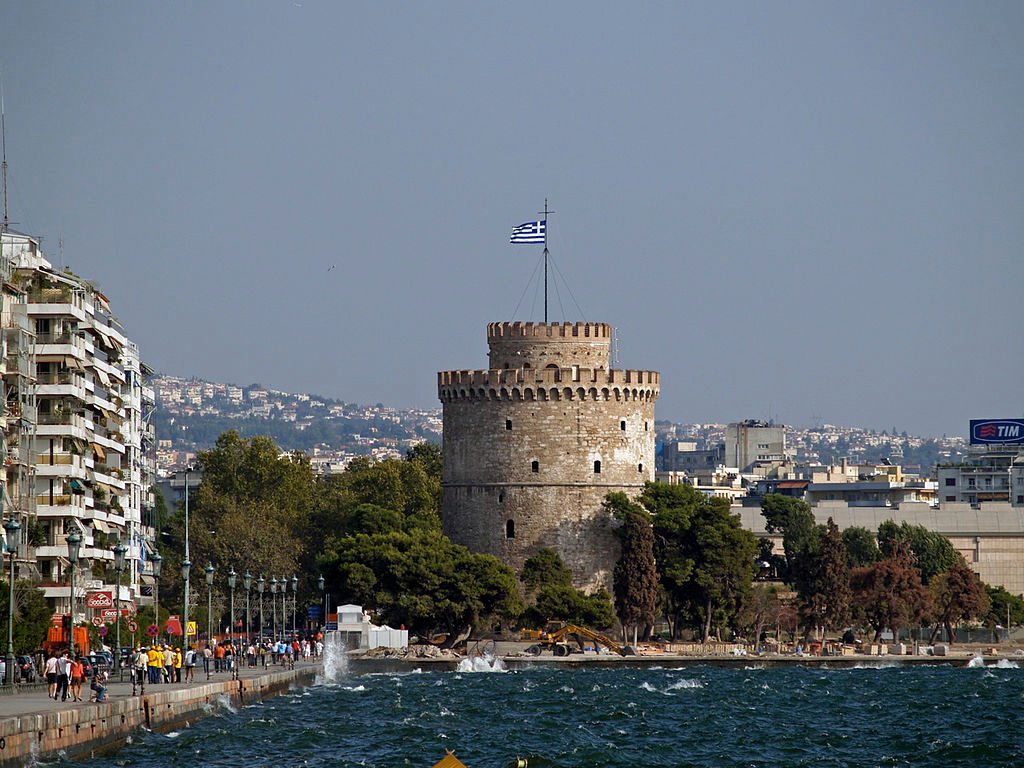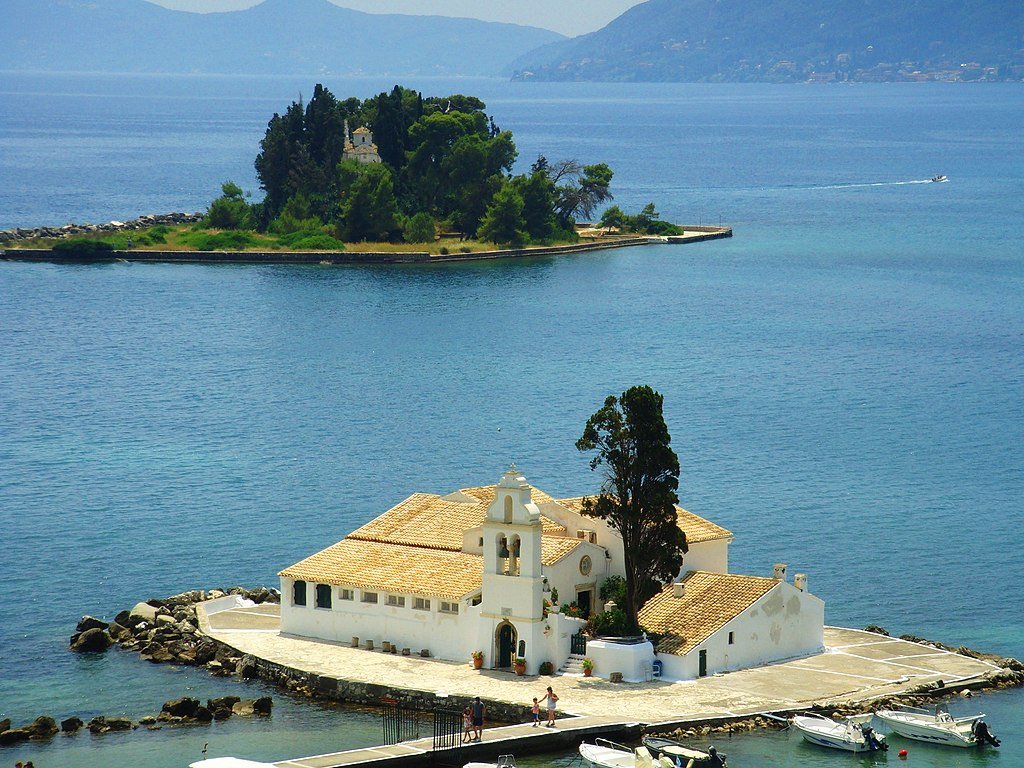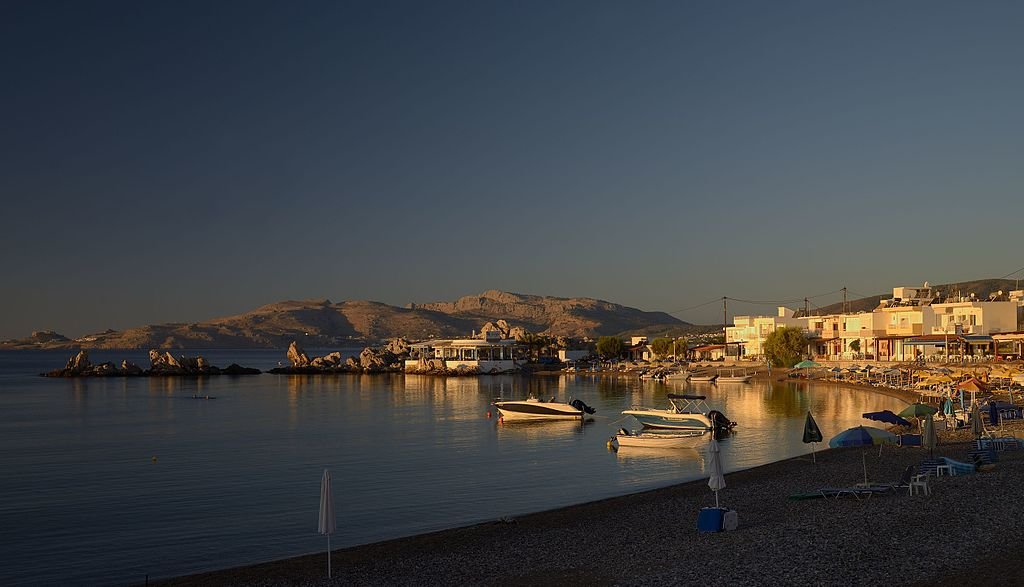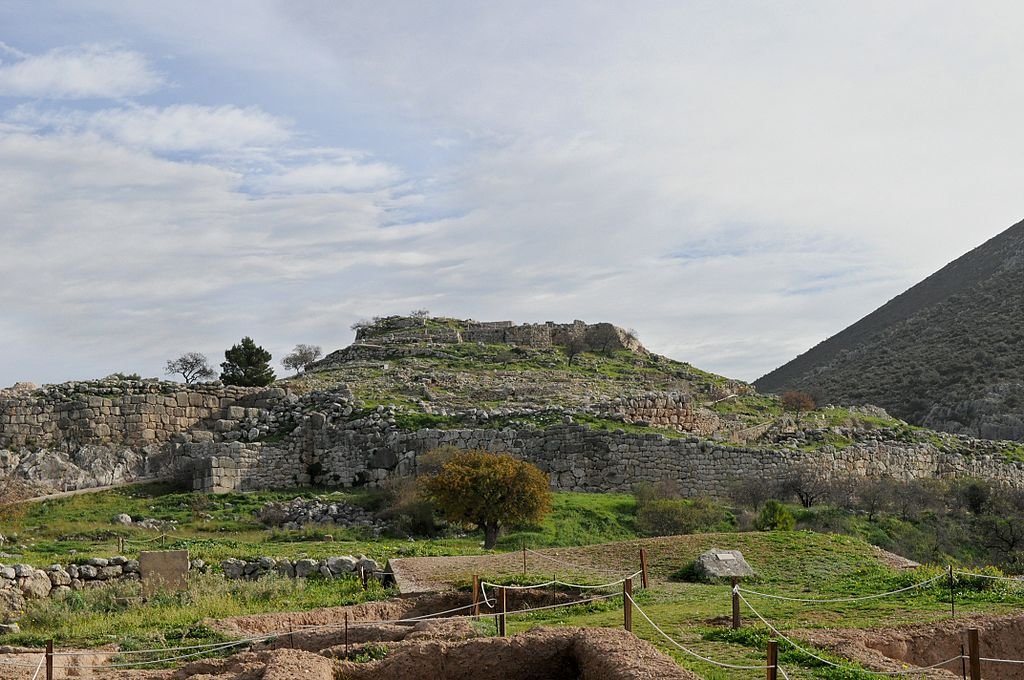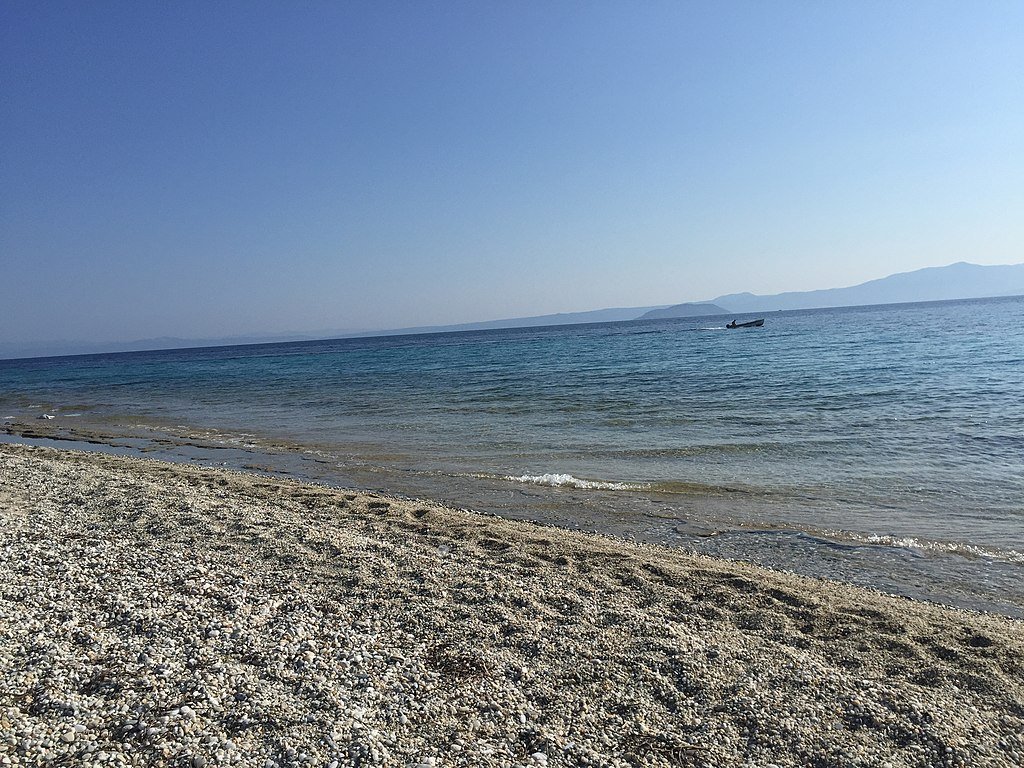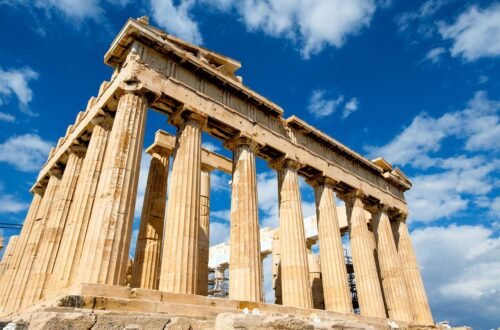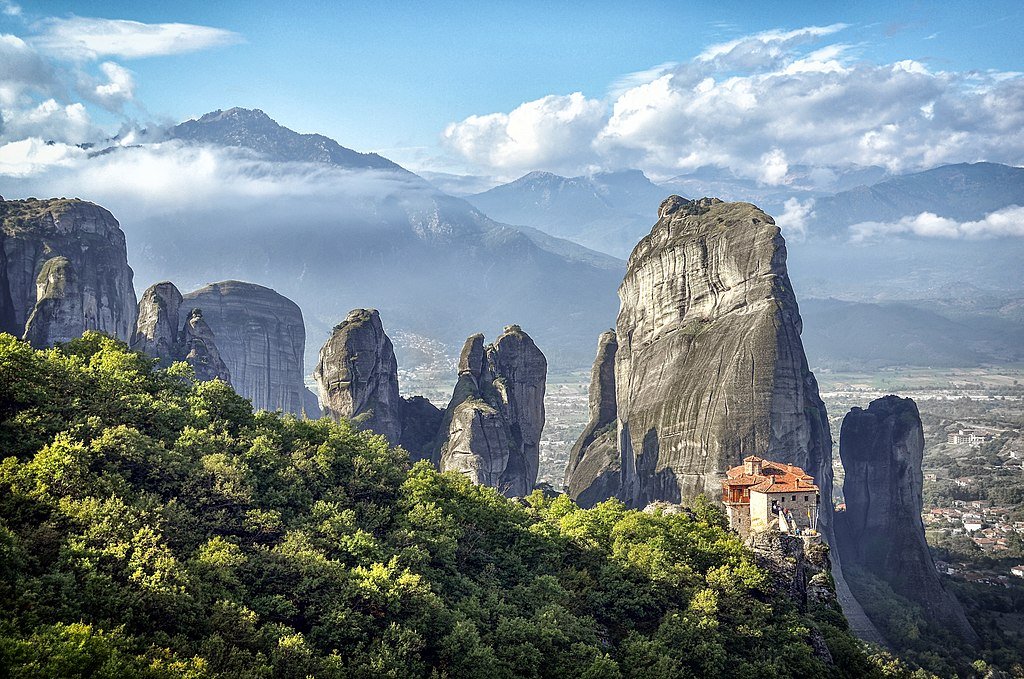
15 Best Places to Visit in Greece
Ranging from the pearly beaches of the Aegean Islands to the rugged hills of Crete, the mythical massifs of Olympus in the north, the time-forgotten monasteries of Athos, and the pulsing streets of modern Athens, Greece is alive with a truly eclectic range of destinations. Here, we look at 15 of the top attractions that every tourist should include on their list of must-see places in Greece. Let’s investigate the top destinations in Greece:
- Thessaloniki
- Epidaurus
- Olympia
- Chania
- Nafplion
- Knossos
- Meteora
- Corinth
- Corfu
- Rhodes
- Zakynthos
- Mycenae
- Athens
- The Halkidiki Peninsula
- Delphi
Thessaloniki
Greece’s second-largest city is on a small, secluded inlet on the Aegean Sea in the north of the country. There are a ton of things to see and do in the city, which is a mix of a bustling commercial port town, an attractive historical center, and a busy university town (where there are more students than anywhere else in Greece). After a terrible fire at the beginning of the 20th century, the center was completely rebuilt in the Byzantine style of the east. The heritage-rich Ano Poli (Upper Town), which was not damaged, has traditional Greek and Balkan architecture. Before having fun in the tavernas and upscale bars of Nikis Avenue and Krini, tourists should be sure to explore the exhibits of the famous White Tower, visit the Museum of Byzantine Culture, and view the Ataturk House.
Epidaurus
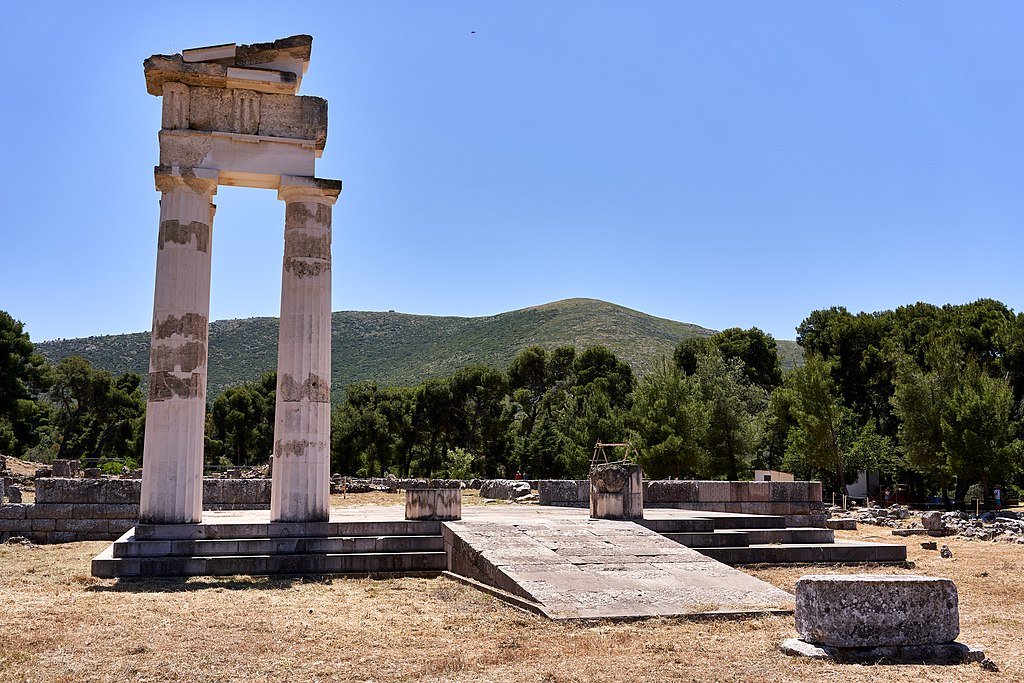
With its huge collection of broken-down ruins, Epidaurus can be seen clinging to the edge of the Argolid Peninsula near the Corinthian panhandle. Many people used to think it was the best place in the ancient world to get well. The old Sanctuary of Asklepios, which flourished with doctors and patients alike from the classical through the Roman ages, is the site’s most well-known artifact. The huge amphitheatre in the middle of the site, which was built in the 4th century BC and has some of the best acoustics of any outdoor stadium in the world, is the main attraction for many people who visit Epidaurus today.
Olympia
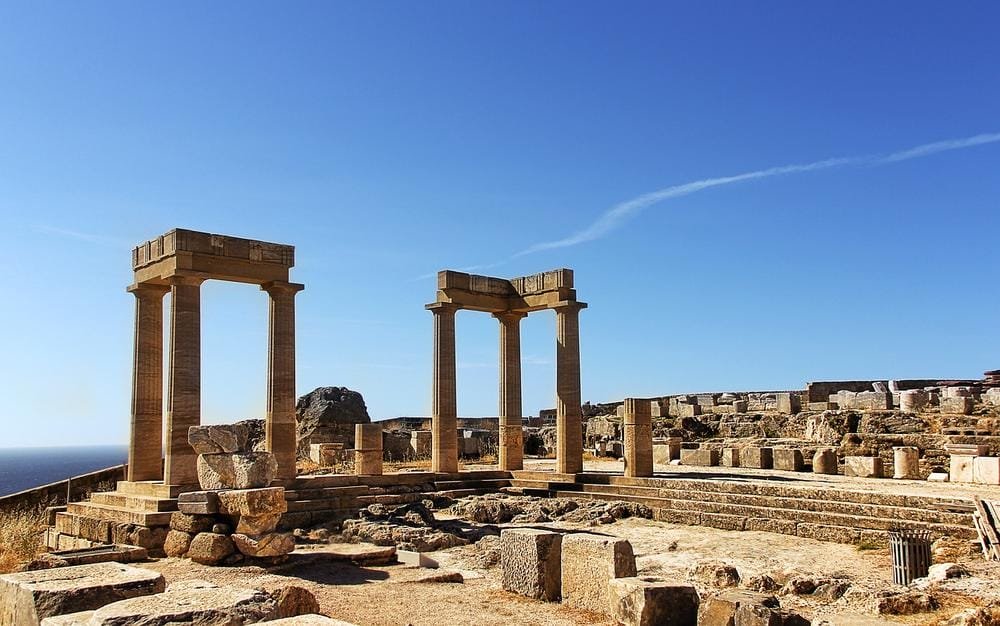
One of Greece’s most iconic UNESCO Heritage Sites today is without a doubt the site where the Olympic Games were first held. Hailed as the heart of the so-called Valley of the Gods for its mind-boggling wealth of honorific temples and looming monuments to the likes of Zeus and Hera (many of which are preserved in the on-site archaeology museum), the site also shows the excavated Olympic stadium and training grounds, where athletes would have competed for the prestige of their poleis (city states) all those millennia ago. In the rough inland highlands of the Peloponnese, where the natural beauty of the Alfios River valley is close by, there are many places to hike and ride a mountain bike.
Chania
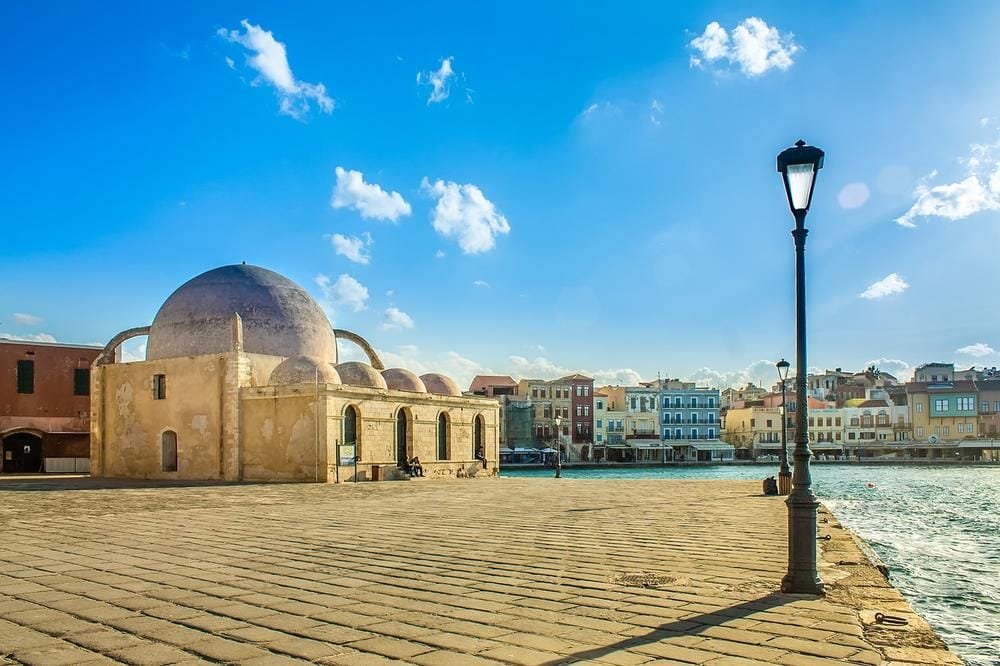
Under its terracotta roofs and the stone-covered tower of its Venetian Lighthouse on the edge of the Mediterranean, Chania hides tight lanes of Cretan tavernas and lots of salty-smelling seafood restaurants as it gracefully curves along the rough coast of northern Crete. It’s without a doubt one of the most beautiful settlements on the island, with a stunning harborside that blends Italianate and Turkic architecture. Along with some genuinely delicious food to try, such as Crete’s own highland greens, dakos pizza breads, ultra-fresh olive oils, and, of course, strong homebrewed raki, there are Ottoman relics and crumbling forts to explore.
Nafplion
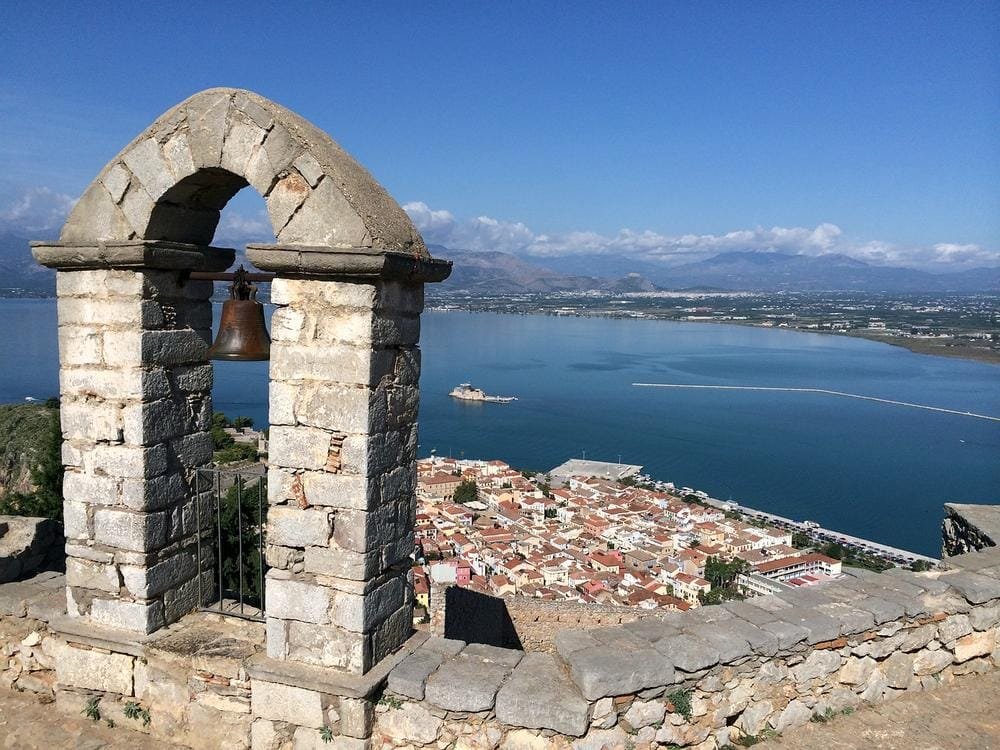
Nafplion has been shaped over the centuries by Greeks, Ottomans, Byzantines, and other peoples. It was once the capital of the 19th-century Greek State and has long been a favorite of Athens’ wealthy elite (just look at the seaside mansions that line the shore and the bobbing millionaire yachts in the harbor!). Bring to mind the Palamidi Citadel, a stronghold built by the Venetians in the 17th century, with tall, intimidating walls on the hills above the town. Additionally, the bustling esplanade along the port is a terrific place to eat authentic, earthy Mediterranean seafood, not to mention the lovely, marble-covered Constitution Square, which bears the name of the national revival that took place here.
Knossos
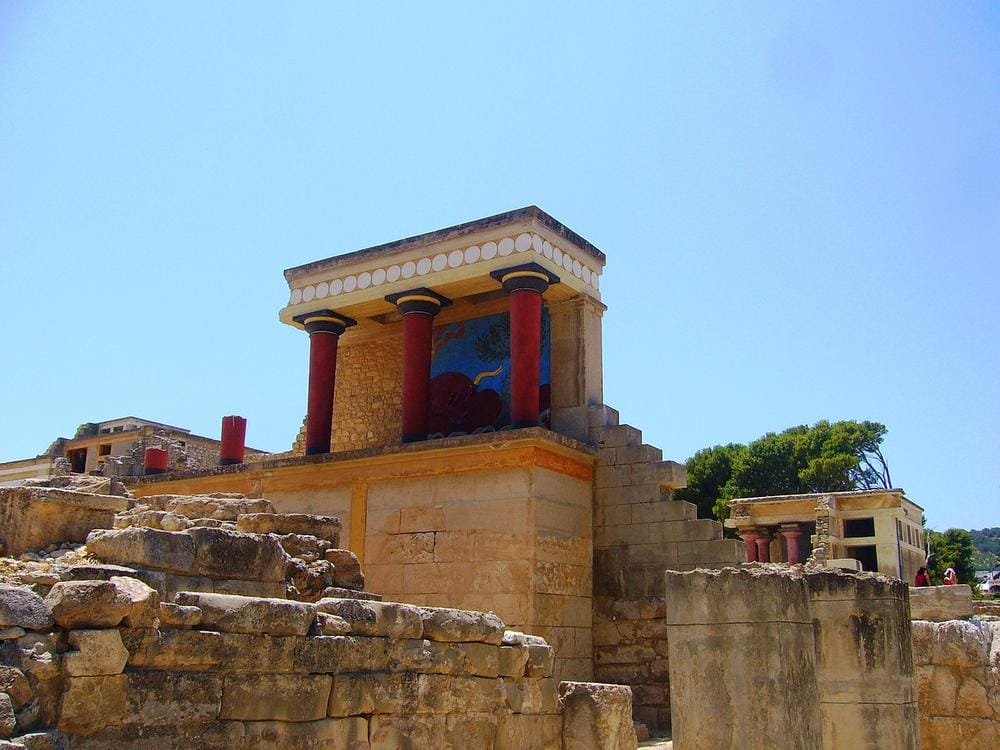
The huge Palace of Knossos is just a short distance south of Heraklion, the capital of Crete. It is the largest Bronze Age relic in all of Greece. The site, which was painstakingly unearthed in the early 20th century and partially painstakingly rebuilt, reveals many secrets of the ancient Minoans, who dominated this section of the Aegean for almost two millennia. It has beautiful mosaics all over it, like the famous frescoes of a charging bull on the main palace building and its red-painted columns. The regal throne room of the Bronze Age rulers, where the well-known mythology of the Minotaur and labyrinth would have taken place, as well as the ruins of Minoan pottery, are also on display.
Meteora
The huge bluffs and hoodoos of Meteora are almost certain to elicit a gasp because they look like they were taken directly out of James Cameron’s Avatar. The Holy Monasteries of Rousanou, Varlaam, and Great Meteoron are three of the country’s most traditional Orthodox monasteries, which can be seen clinging precariously to the precipices in magnificent displays of Byzantine and post-Byzantine art and architecture. These dramatic pillars of sandstone are located in the heart of northern Greece. These beautiful, UNESCO-recognized buildings were built between the 14th and 16th centuries, and they now stand out against the spectacular mountainous landscape of the area.
Corinth
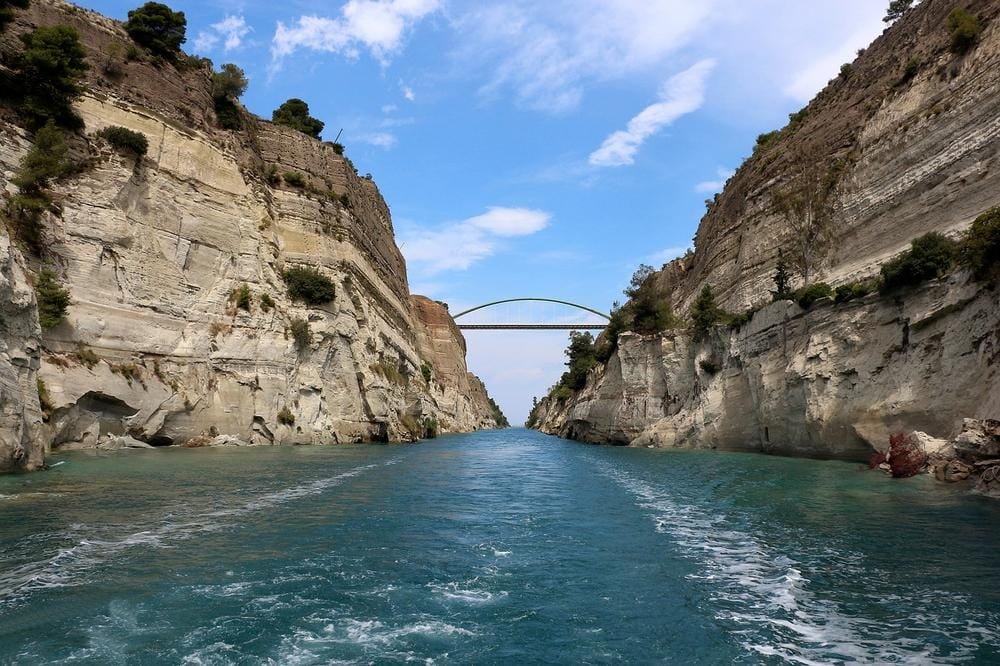
In ancient times, Corinth grew and thrived on the border between ancient Attica and the Peloponnese, between the peaks of the Oneia Mountains and the sparkling waters of the Corinthian Gulf. Its naval and strategic location on the Isthmus of Corinth, which served as a vital point of contact between the two superpowers Sparta and Athens during the turbulent Peloponnesian War at the start of the 5th century BC, made it a formidable force. Corinth supported the winner, which was clear from its strong defenses, the towering ancient acropolis (which might have been even more impressive than its counterpart in Athens), and the wealth of art and culture on display at the Archaeological Museum of Ancient Corinth.
Corfu
Corfu, a triangular island that connects the Ionian Sea in Greece to the Adriatic Sea in Albania, is definitely the kind of place that gets written about in travel guides. Alabaster beaches like Pelekas and Chalikounas along its winding coastline ooze with solitary beauty, while Old Perithia and Corfu Old Town are full of Venetian artifacts, anti-pirate castles, and sun-drenched esplanades. Inland, the area gives way to Corfu’s less-visited parts, where forests of prickly cypress and flailing Spanish fir trees grow along the mountains and beautiful towns like Lakones add a touch of whitewash to the lush surroundings.
Rhodes
Rhodes is a teardrop-shaped island in the Aegean. It has beautiful beaches, quiet pebble coves, luxurious five-star resorts, interesting villages, and beautiful mountain interiors that bring in a lot of tourists every year. Travel to Rhodes City, an ancient village, to begin. The magnificent Colossus of Rhodes, one of the ancient world’s wonders, once stood in this area, which is near the northeast coast. However, it is now home to the stunning medieval Grand Master’s Palace (a UNESCO site to boot). Other places include the colorful Valley of the Butterflies, the beaches at Ixia, the lively 18–30 club scene in Faliraki, and the quieter beauty of the Dodecanese villages and castles in the interior.
Zakynthos
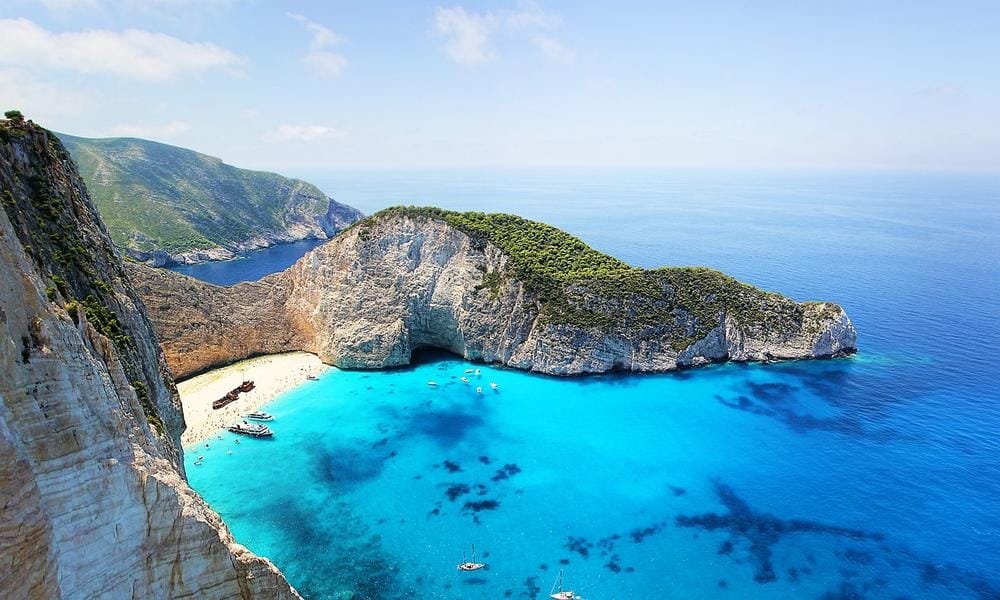
From the azure seas of the Ionian Sea, rocky Zakynthos emerges like a shining gem. Its shoreline is marked by chalk-white cliffs that rise like fortifications in the west and hide treasures like the famous Navagio Beach (or Shipwreck Beach, if you prefer) and the creepy Blue Caves on the northern shore. While famed Laganas beats and booms in the south-west—an 18-30s hotspot of thumping clubs and cocktail bars that goes into overdrive during the summer high season—hikers and adventure seekers will uncover the fir-dotted, cypress-spotted olive orchards that are rarely seen by visitors.
Mycenae
Mycenae is situated on the Peloponnesian Argolid’s limestone hills and olive-clad ridges. It was supposedly raised by mythical Cyclops and is the ancestral home of the powerful King Agamemnon (the same of the Trojan Wars). The site is without a doubt one of the most interesting and impressive archaeological sites. It is located in one of Greece’s less traveled and off-the-beaten-path places. It was built a long time before the impressive Acropolis of Athens or the temples of Delphi. Since the Atreid dynasty ruled in this area in the 14th century BC, many of the ruined town’s monolithic walls, stunning burial sites, and enormous kingly tombs date from this period.
Athens
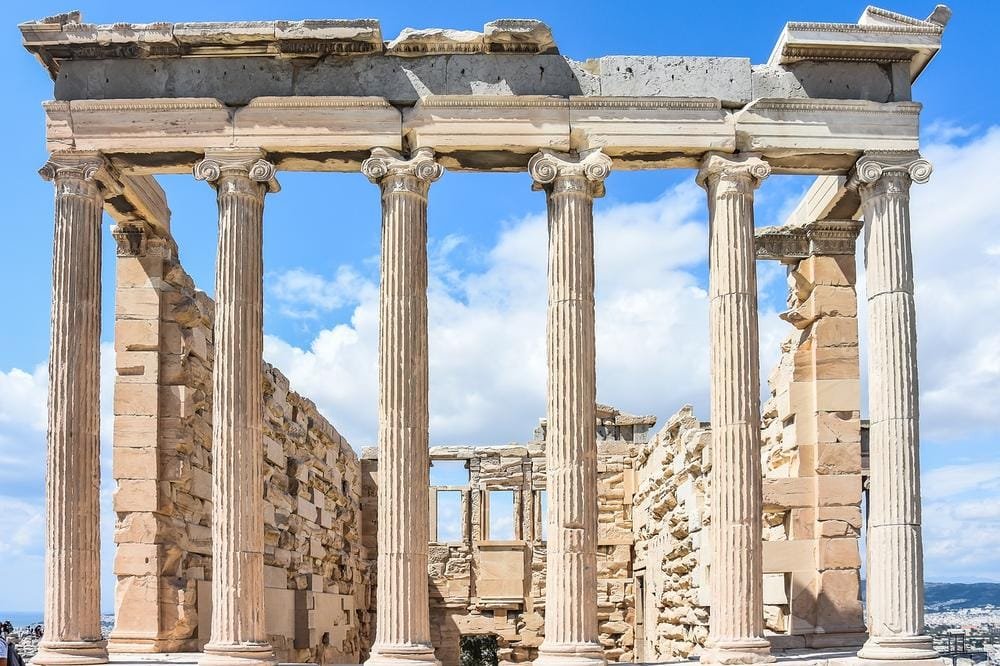
There aren’t many cities in the world with as much history as Athens. Here, famous people like Socrates, Plato, Euripides, and Pericles would have debated and talked about the issues of the day. The Parthenon and the Agora ruins would have been the center of attention. It was also the cradle of every great classical tragedy and comedy, including Oedipus Rex, Antigone, and The Phoenician Women. Democracy was introduced there by Cleisthenes in the late 6th century. The metropolis is still the biggest in Greece and is a bustling, frequently turbulent political center with a lot of beautiful churches and government buildings. Don’t skip the Plaka neighborhood, where rustic tavernas spill out into the Acropolis hill’s historic ruins.
The Halkidiki Peninsula
Some of the best beaches and resorts in the north are on the Halkidiki Peninsula, which sticks out into the Aegean Sea like three arched fingers and is just south of the busy city of Thessaloniki. While Kassandra knows how to party and offers beachside cocktail bars and a scattering of upscale hotel chains overlooking the Med, Kalamitsi, on the tip of the Sithonia headland, attracts a sedate throng of ecotourists with the campgrounds that go along with them. The easternmost peninsula, Athos, is another enigmatic region. Some of Greece’s most traditional monastic communities live here. From their perched cloisters in the hills, they stay true to the ways of the Greek Orthodox Church. They are defiant and traditional to the extreme.
Delphi
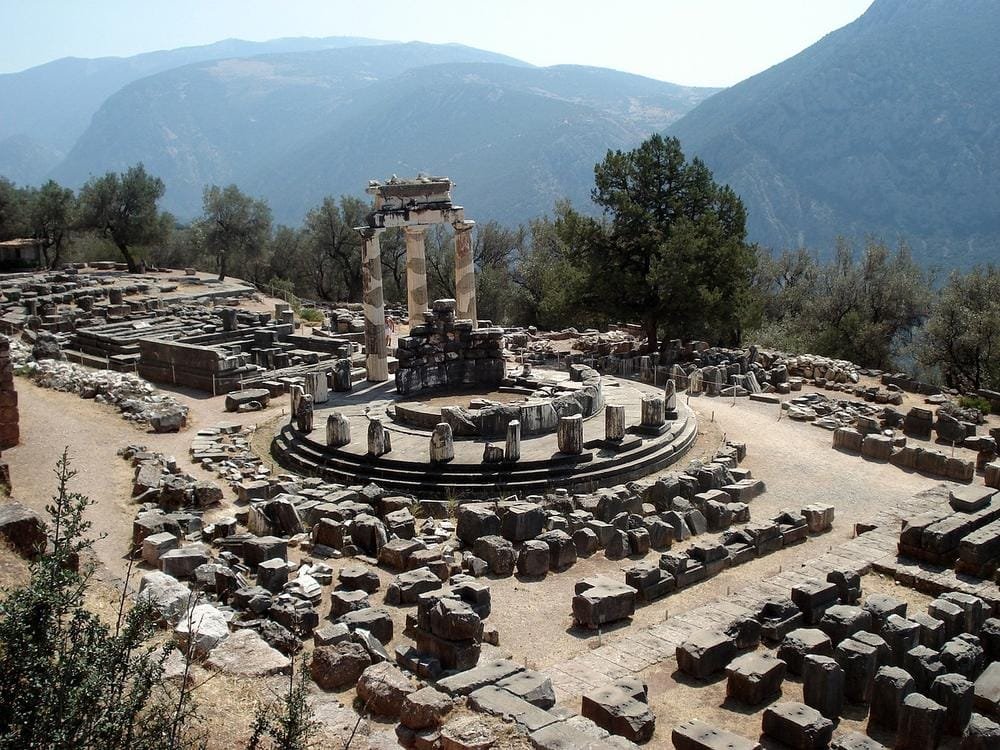
In Delphi, which is perched on the brow of Mount Parnassus and borders the Corinthian Gulf, there are many sacred historic sites. For countless centuries, this cascading collection of breathtaking ruins and towering peristyles was sought after by kings, emperors, demagogues, and democratic leaders for the predictions of its renowned oracle and the favorable judgments of its Pythian priestesses. The site’s main attraction has to be the Temple of Apollo’s decaying ruins, which hide ancient sage rooms beneath their hexastyle Doric columns. Along with one magnificent theater and a mountainside stadium, there are rows of old treasuries to be seen that were constructed by the many city-states of the ancient world.


